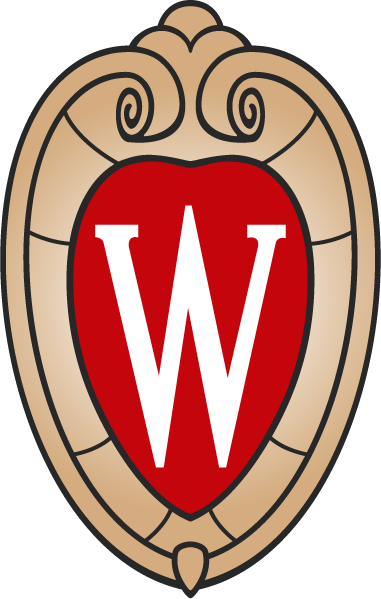
Summary
Watch this short video about why our online Language program is one of the best in the country!
This practical high beginner's course (A1.2), developed fully by UW–Madison for adult language learners, explores the cultural richness of the Spanish-speaking world while improving your ability to converse about real-life topics. Focuses on the present tense with an introduction to the past tense.
Our unique materials allow you to listen to the voices and stories of speakers from more than 10 different Spanish-speaking countries. A proven communicative approach emphasizes speaking competency while also building skills in listening, reading and writing. See Outline for complete details. All materials included.
Prerequisite: Spanish 1.
Find out if this is the right level for you with these placement tests: Spanish 1 self-placement test, Spanish 2 self-placement test.
Course format:
You will practice speaking in small groups during weekly one-hour sessions led by an experienced instructor.
The live online sessions begin one week after the scheduled course start date to allow time to work through the first unit of learning material in preparation for the live conversation practice.
Online course materials introduce new grammar and vocabulary and teach pronunciation, listening, and reading skills through videos, audio and interactive exercises. Budget 4-5 hours a week to work through the online asynchronous content.
Course materials become available online on the scheduled course start date and remain accessible for one month after the course ends.
Want to know more about learning a language online? Read Dr. Julie Dahl's blog post about our online course format.
A printable workbook (PDF) is included in the price. All other materials are available through the course platform.
Sections anticipated for fall 2025 (See Upcoming Dates for open sections and more detail):
Thursdays, Aug. 21–Oct. 30, 5:30–6:30 p.m. CT
Tuesdays, Sept. 2–Nov. 11, 5:30–6:30 p.m. CT
Mondays, Sept. 8–Nov. 17, 8:30–9:30 a.m. CT
Mondays, Sept. 8–Nov. 17, 5:30–6:30 p.m. CT
Tuesdays, Sept. 23–Dec. 9, 5:30–6:30 p.m. CT (No virtual conversation on Nov. 25)
Wednesdays, Oct. 1–Dec. 17, 5:30–6:30 p.m. CT (No virtual conversation on Nov. 26)
Course outline
Course outline
Below are the themes and language outcomes for each unit. Each unit also contains 10-15 listening activities, an extended reading activity, review dialogues and cultural information related to the unit theme.
Unidad 1: ¿Quién soy?
- Review common greetings
- Contrast saber y conocer
- Learn Z-verbs
- Review gender of nouns
- Reading: La diversidad del mundo hispanohablante
- Pronunciation: vowels
Unidad 2: El tiempo libre
- Vocabulary: sports, hobbies and pastimes
- Irregular stem-changing verbs: e-ie, e-i, o-ue
- Gustar and similar verbs
- Agreeing and disagreeing
- Reading: El fútbol: el deporte rey
- Pronunciation: regional differences
Unidad 3: ¿Cómo estoy?
- Vocabulary: feelings, emotions and states of being
- G-verbs
- Expressions with hacer
- Expressions with tener
- Adjectives used with ser and estar
- Reading: Mis secretos para el éxito profesional y personal
- Pronunciation: A
Unidad 4: Mi rutina diaria
- Vocabulary: basic parts of the body and daily routines
- Reflexive verbs
- Review telling time
- Discussing order of events
- Expressions of frequency
- Reading: Un día típico en el Camino de Santiago
- Pronunciation: E
Unidad 5: ¿Qué recuerdas?
- Vocabulary: talking about extended family
- Review: dates and spelling
- Ordinal numbers
- Contrast muy, mucho and muchos/as
- Talking about obligations with tener que
- Review of Unidades 1-4
Unidad 6: De compras
- Vocabulary: shopping for food items
- Numbers 100-1,000
- Present progressive tense
- Describing people and actions in photos
- Review written accent marks
- Reading: Los tianguis en México
- Pronunciation: I
Unidad 7: ¿Cómo soy?
- Vocabulary: describing what people are like
- Personal traits
- Physical appearance
- Clothes and colors
- Demonstratives: this/these and that/those
- Reading: El mejor trabajo del mundo
- Pronunciation: O
Unidad 8: ¿Qué hacemos?
- Vocabulary: weather
- Making plans
- Going-to future
- Making comparisons
- More on written accent marks
- Reading: Latitud Cero en Ecuador
- Pronunciation: U
Unidad 9: ¿Cómo fue?
- Vocabulary: public transportation
- Simple past tense: el pretérito
- Ser and ir in the past
- Describing houses and apartments
- Reading: La fiesta de los patios en Córdoba, España
Unidad 10: ¿Qué aprendimos?
- Vocabulary: numbers in the thousands
- Talking about years with the past tense
- Complex sentences
- Review Unidades 6-9
Earn Continuing Education Hours
By participating in this class you will earn:
| Instructional Hours | 45 |
| University of Wisconsin Continuing Education Units | 4.5 |
